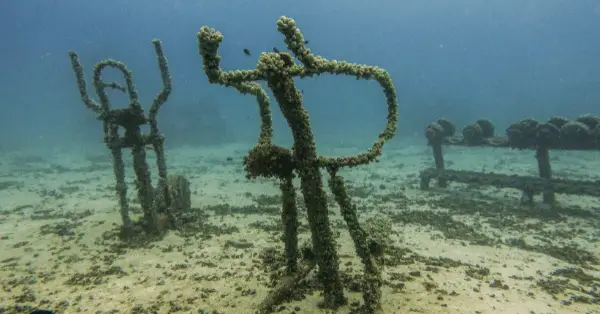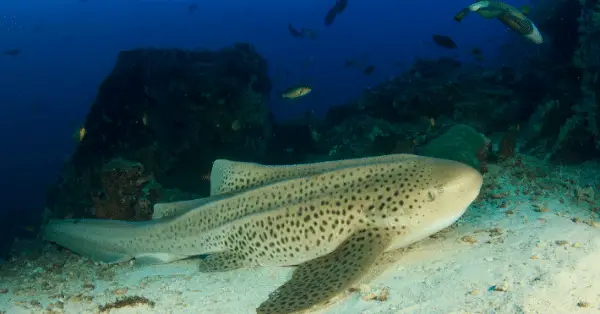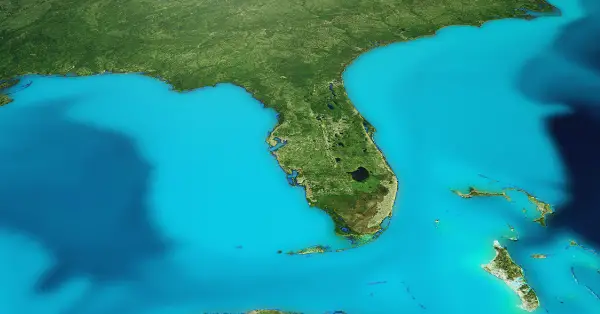Ultimate Guide to Scuba Diving in Galapagos: Dive sites & marine life
The Galapagos Islands, an archipelago where the confluence of currents brings to life an unparalleled underwater spectacle, are home to dive sites that are not just locations, but narratives of nature’s marvels. Each site, from the remote and shark-infested waters around Darwin’s Arch to the playful sea lion encounters at Kicker Rock, tells a story of evolution and survival.
Wolf Island offers advanced divers a ballet of hammerhead sharks, while the cooler currents at Cousin’s Rock reveal a tapestry of marine biodiversity, including seahorses and eagle rays. In these waters, every dive is a chapter in a larger tale of ecological wonder, inviting divers to immerse themselves in a world where every bubble and every creature plays a part in the Earth’s most compelling story of natural history.
Why Dive in the Galapagos?
Diving in the Galapagos is not merely an activity; it’s an immersion into a world where nature’s rules are visibly distinct. Here, the confluence of the cold Humboldt and the warm El Niño currents creates a unique marine ecosystem, offering an extraordinary diversity of life. The islands serve as a liveaboard to an array of big and rare marine species—hammerhead sharks, marine iguanas, and the elusive whale shark, making each dive an entry into the vast library of natural wonder. Beyond the thrill of encounters with these majestic creatures, diving in the Galapagos is a step into a living museum, where the story of evolution is told by the very creatures that inhabit its waters. It’s a dive into the heart of biodiversity, promising both the adventure of the unknown and the familiarity of a shared home on this blue planet.
Best Dive Sites in the Galapagos
The Galapagos Islands are a beacon for divers seeking the extraordinary. Among its revered sites, Darwin’s Arch stands as a monument to the underwater marvels, hosting dense schools of hammerhead sharks and the gentle giants, whale sharks, in their natural ballet. Not far behind, the sheer cliffs of Wolf Island provide a sanctuary for myriad shark species, offering a symphony of life in the deep blue. Kicker Rock, with its dramatic volcanic formations, serves as a backdrop for playful sea lions and a kaleidoscope of pelagic fish. Each site in the Galapagos is a world unto itself, promising encounters that redefine the essence of diving.
- Darwin and Wolf Islands: Revered for their unparalleled shark encounters, including large schools of hammerheads and sightings of whale sharks, these remote sites are a pinnacle of Galapagos diving adventures, suitable for experienced divers seeking thrilling pelagic encounters.
- Carrion Point: Offers a gentler dive experience near Santa Cruz, with opportunities to see a variety of marine life including sharks, rays, and colorful reef fish, making it ideal for divers of all levels.
- Cape Douglas: On the western side of Fernandina Island, this site is known for marine iguanas, penguins, and flightless cormorants. It’s a unique dive offering a glimpse into the Galapagos’ endemic species.
- Vicente Roca Point: A wall dive that astonishes with its diversity of marine life, from seahorses and sunfish to turtles and whale sharks, located off Isabela Island, suitable for intermediate divers.
- Cousin’s Rock: This steeply sloping volcanic rock formation is carpeted with corals and sponges, home to seahorses, rays, and schools of fish, providing an enriched dive experience near Santiago Island for intermediate divers.
Marine Life in the Galapagos:
The Galapagos waters are a melting pot of marine biodiversity, hosting a blend of tropical and temperate sea life. Divers can expect close encounters with the archipelago’s famous residents: playful sea lions, enigmatic marine iguanas, and the only seafaring lizards in the world. The islands’ unique location attracts a spectacular array of sharks, including the docile whale shark, the nimble hammerhead, and the curious Galapagos shark. Amidst the vibrant coral reefs, divers can also marvel at an abundance of rays, sea turtles, and a kaleidoscope of colorful fish, making every dive an unforgettable exploration of life beneath the waves.
- Hammerhead Sharks: Often found in large schools around Darwin and Wolf Islands, these sharks create a mesmerizing underwater scene, making these sites a must-visit for shark enthusiasts.
- Whale Sharks: The gentle giants of the ocean, whale sharks, are most commonly spotted around Darwin Island. Their peaceful demeanor and immense size offer a once-in-a-lifetime diving experience.
- Mola Mola (Sunfish): These peculiar and massive bony fish are often seen around Punta Vicente Roca. Their unique appearance and behavior are a highlight for divers seeking something truly different.
- Marine Iguanas: Unique to the Galapagos, these reptiles are the only sea-going lizards in the world, often seen around Fernandina and Isabela Islands.
- Galapagos Penguins: The only penguins found north of the equator, offering a rare opportunity to dive with penguins, especially around Isabela and Fernandina Islands.
- Sea Lions: Playful and curious, sea lions are a common sight in many dive sites, including those around Santa Cruz and San Cristobal Islands, making every dive an interactive experience.
- Manta Rays: These gentle giants, with their impressive wingspans, are often spotted in the waters around Isabela Island. Their graceful movements and peaceful nature make encounters with them unforgettable.
- Eagle Rays: Known for their beautiful spots and long tails, eagle rays can be found gliding through the archipelago, especially near Santa Cruz Island. Their elegance adds a special touch to the diverse marine life in the Galapagos.
- Galapagos Sharks: These robust predators are a highlight for many divers, particularly around Wolf and Darwin Islands. Known for their curiosity, Galapagos sharks offer thrilling encounters.
- White Tip Reef Sharks: Often found resting on the ocean floor or cruising along the reef edges, white tip reef sharks are a common sight in many Galapagos dive sites, offering divers a close-up view of these graceful hunters.
Diving Conditions and Best Time to Dive
The Galapagos Islands offer year-round diving, but conditions vary. Water temperatures range from 18°C (64°F) in the cooler months (June to November) to 25°C (77°F) during the warmer season (December to May), influencing the type of marine life encountered. Visibility can exceed 30 meters (100 feet) in the clear season. The best time to dive depends on what you wish to see: Whale sharks are most commonly sighted from June to November, while other marine life is abundant all year.
Conservation Efforts and Sustainable Diving
The Galapagos is a beacon for conservation, emphasizing the importance of sustainable diving practices to protect its unique ecosystem. Dive operators and visitors alike are urged to follow strict guidelines to minimize impact, including adhering to no-touch and no-take rules, maintaining buoyancy to avoid coral damage, and participating in conservation initiatives. The commitment to preservation ensures that the Galapagos remains a vibrant and thriving environment for future generations to explore and marvel at.
Charles Darwin Foundation
The Charles Darwin Foundation, operating in the Galapagos, plays a crucial role in the archipelago’s conservation efforts. It focuses on scientific research and education to support the preservation of the Galapagos ecosystems. The foundation’s work is vital in informing conservation strategies and policies, ensuring the islands’ unique biodiversity is protected for future generations. Their efforts underscore the importance of sustainable interaction with this delicate environment, highlighting the balance between scientific exploration and the need for conservation.
Planning Your Galapagos Diving Adventure
When planning your dive trip to the Galapagos, consider both liveaboard and land-based options. Liveaboards offer extensive reach to remote sites like Darwin and Wolf Islands, ideal for those keen on maximizing their dive experiences. Land-based stays provide flexibility and opportunities to explore the islands’ unique landscapes and wildlife. Regardless of your choice, book with responsible operators committed to conservation. Ensure your dive skills are up-to-date, as the Galapagos can challenge even seasoned divers with its currents and depths.
Conclusion
The Galapagos Islands offer a unique diving experience, blending unparalleled marine biodiversity with conservation efforts. Each dive is an adventure, revealing the islands’ commitment to preserving their natural wonder. Whether exploring the vibrant marine life, navigating the diverse dive sites, or contributing to conservation, your Galapagos dive adventure is a journey into the heart of nature’s most precious underwater treasures.






